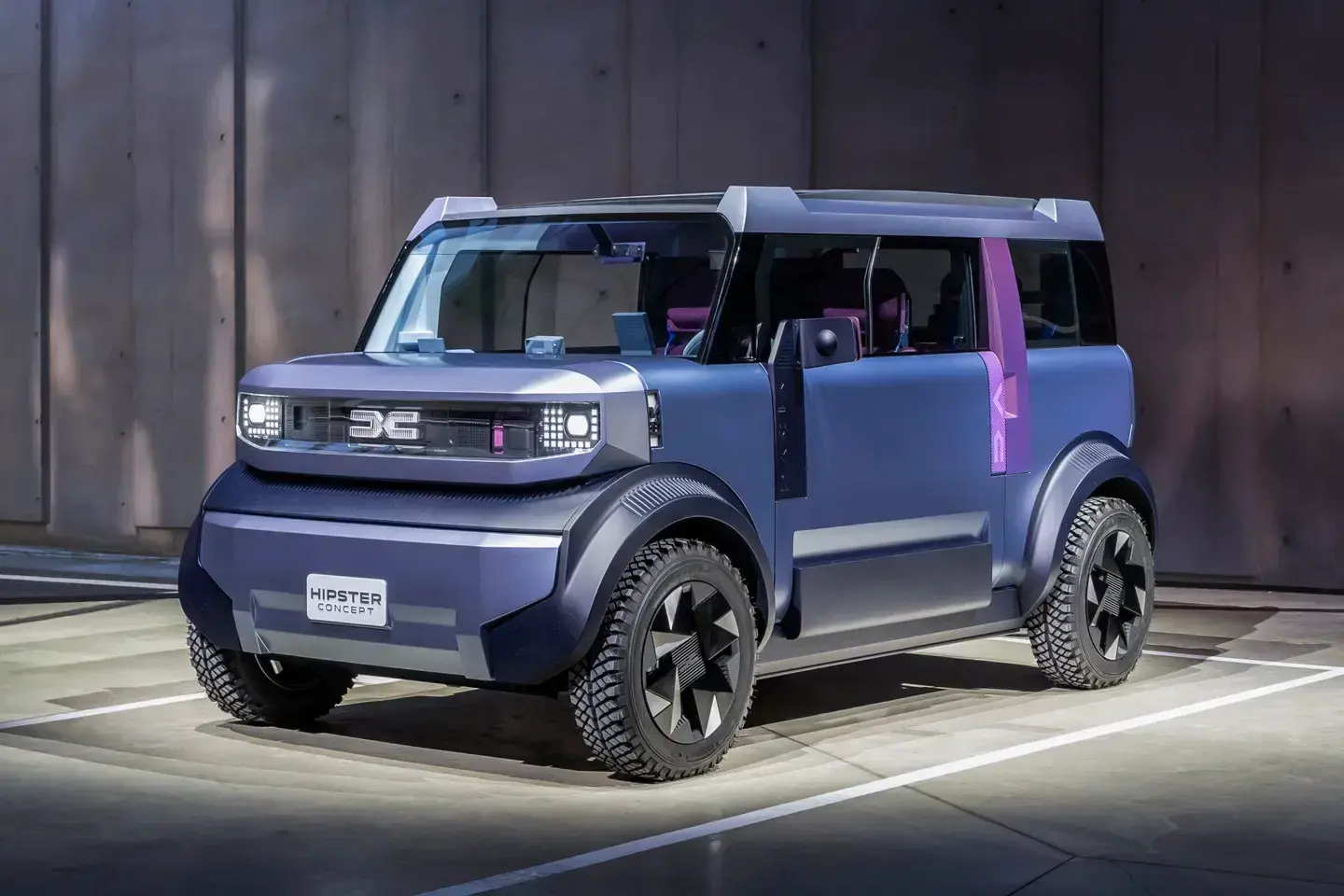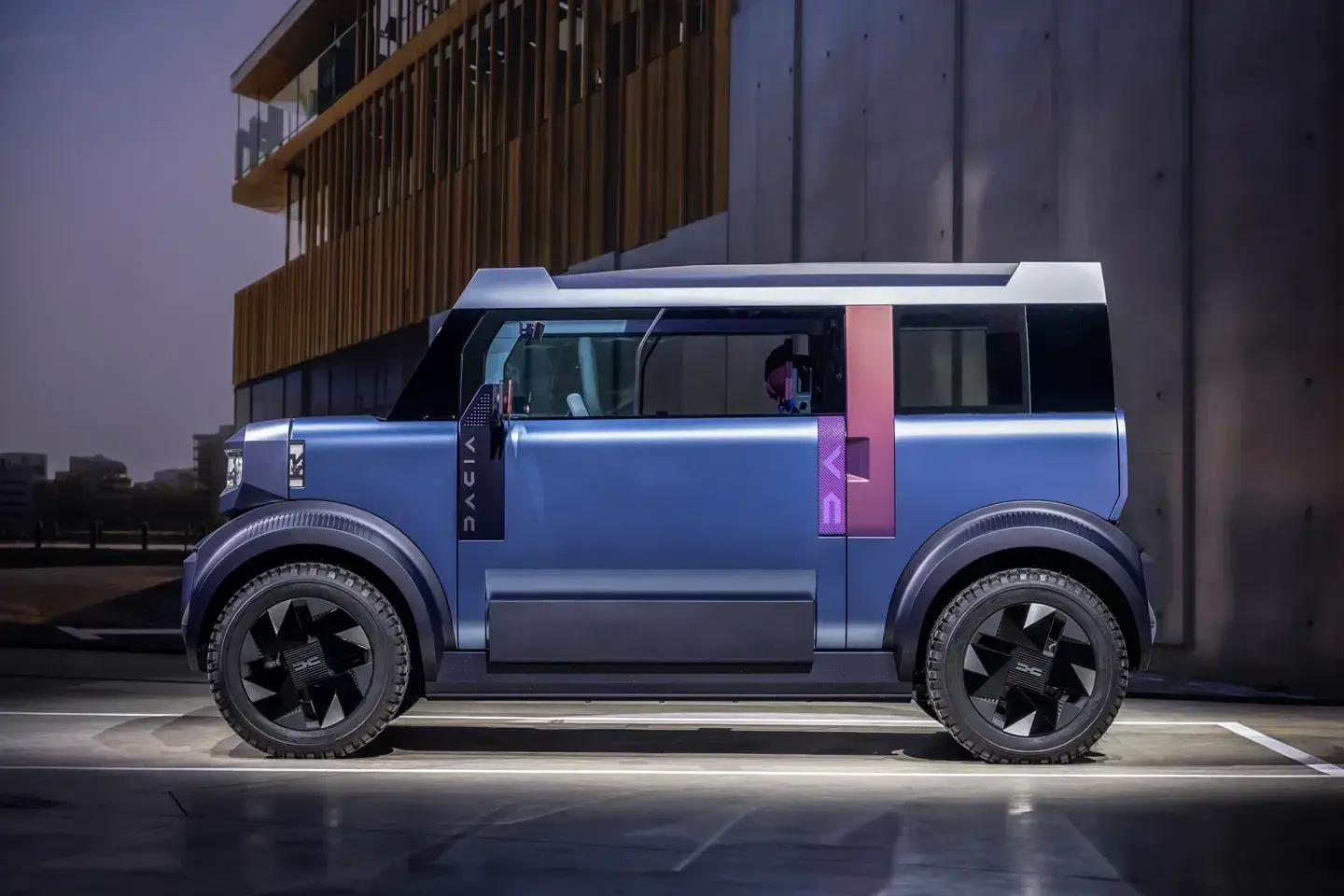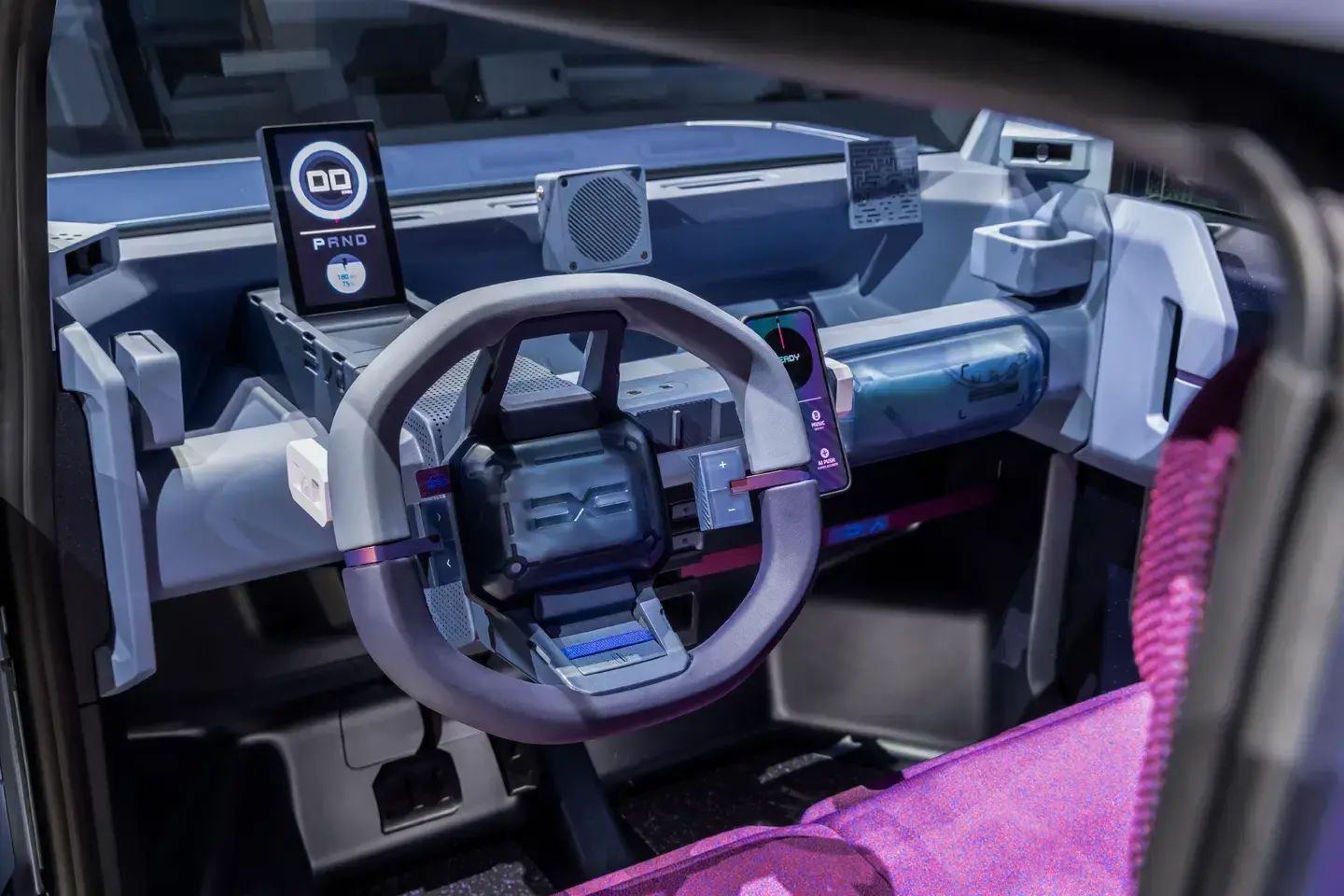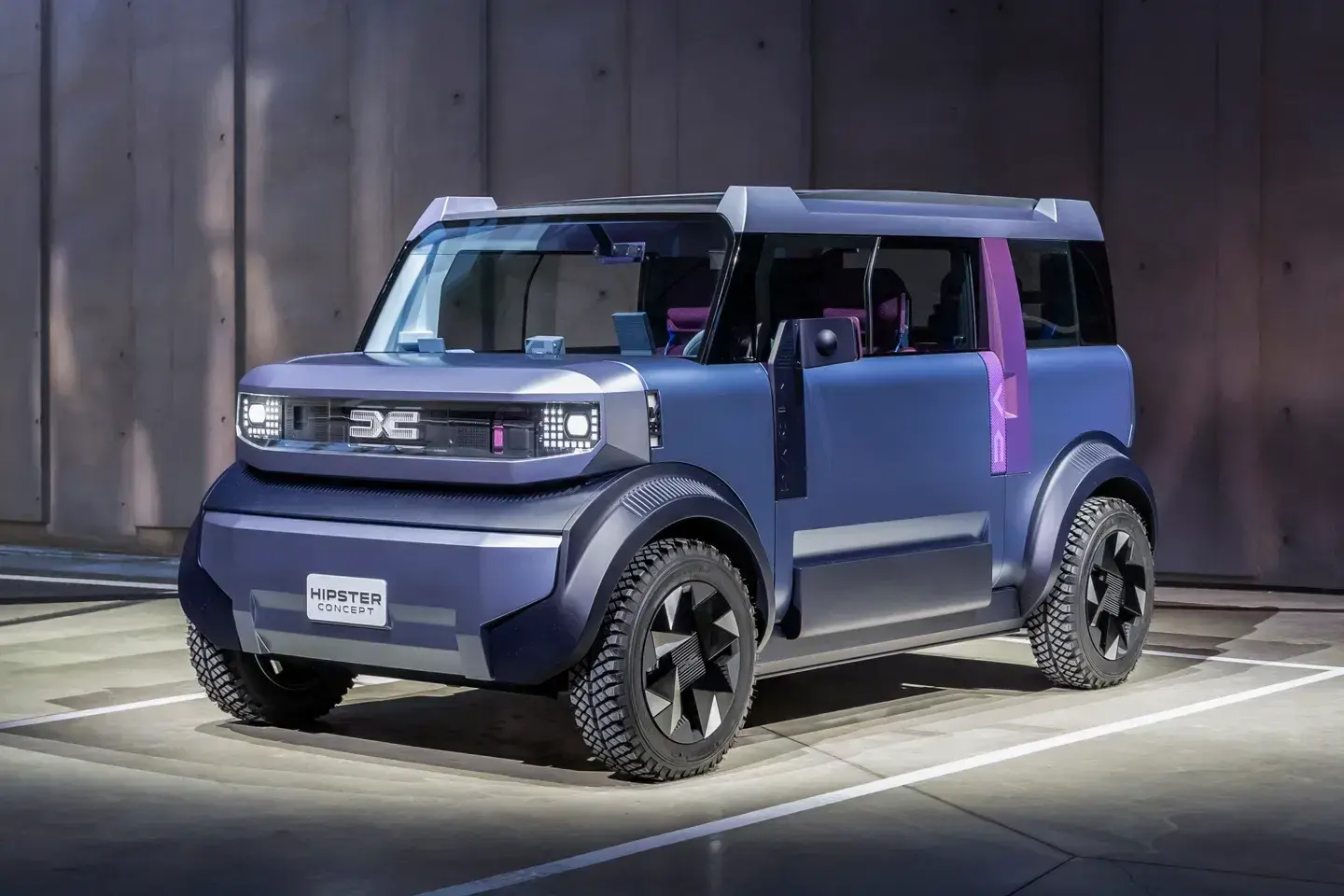
The Hipster measures just 3.0 metres long, 1.55 metres wide, and 1.35 metres tall and weighs under 800kg.
Unlike quadricycles such as the Citroën Ami or Fiat Topolino, Dacia positions the Hipster as a true four-seater capable of motorway use, with an anticipated range close to 100 miles and a top speed suitable for fast roads.
That combination of tiny exterior dimensions but usable performance puts the Hipster in a different class from existing ultra-basic EVs and suggests it could appeal to urban commuters who still need occasional longer trips.
Space-saving design that actually works

Packaging is the Hipster's strongest card. Dacia's designers used oblong proportions and ultra-thin, recyclable fabric seats to free up interior room.
The result is cabin space that fits four adults more comfortably than you'd expect for a sub-3-metre car rear legroom that rivals some midsize hatchbacks.
"The metal structure is the same as conventional seats," says David Durand, Dacia's VP of design, noting the thin seats retain conventional mounting and belt points while saving space.
Practical touches include a front passenger seat that folds flat and a rear bench that converts the boot from 70 litres to 500 litres—a leap that matches the load capacity of larger estate cars and underlines how efficient packaging makes more of less.
Minimalist tech, smartphone-first approach

Rather than equipping the dash with multiple built-in screens, Dacia kept the Hipster's instrument cluster narrow and moved infrequent functions to a dedicated smartphone app.
The app is intended to handle navigation, tyre-pressure monitoring and connected services—lowering component count and weight while keeping costs down. This approach aligns with broader trends in automotive technology toward smartphone integration.
Safety features weren't sacrificed for savings: both driver and passenger airbags are fitted, with the passenger airbag showcased behind a translucent cover that echoes the concept's visual theme.
Utility with character
The Hipster blends practical details and playful design. A split tailgate uses edge-to-edge glass to reduce framing weight; LEDs sit behind the glass without separate covers.
The concept also uses a system of U-clips mounting points throughout the car for removable accessories, including a portable speaker that clips to the tailgate for outdoor use.
Windows slide forward inside rather than rely on complex door mechanisms, a nod to classic small-car packaging and a reminder that clever engineering can replace costly hardware.
Production viability—and the regulatory hurdle
According to Katrin Adt, Dacia's CEO, Renault Group has "the technology and capacity to make it happen."
The larger obstacle is regulatory: Dacia is pressing European authorities to consider a new vehicle category for ultra-lightweight production cars, one that would relax some structural crash-test and ADAS mandates that currently apply to conventional passenger cars.
That regulatory gap means a production Hipster is plausible but conditionally likely positioned for city drivers, delivery fleets and micro-businesses rather than young families who prioritise maximum crash-test performance.
Why the Hipster matters
Dacia's momentum in Europe has been clear: models such as the Sandero and Spring have capitalised on buyers looking for value. With inflation and affordability top of mind, Dacia argues the market is ready for a smaller, lower-cost electric model.
As Frank Marotte, Dacia's VP, noted, the market "has come to Dacia, beyond all expectations." If regulators permit a lightweight segment, the Hipster could define how mainstream brands deliver low-cost EV mobility across Europe.
Key technical specifications (concept)
| Specification | Detail |
|---|---|
| Length | 3.0 metres |
| Width | 1.55 metres |
| Height | 1.35 metres |
| Weight | < 800 kg |
| Range (anticipated) | ~100 miles |
| Seating | 4 adults |
| Estimated Price (production) | £10,000–£14,000 |
Expert take: small car, big implications
The Hipster isn't just a novelty; it's a strategic response to the twin pressures of cost and emissions. By focusing on weight, packaging and smartphone integration, Dacia shows a credible route to a genuinely affordable EV. If regulators adapt, the Hipster could become a benchmark for accessible electric mobility in Europe.
In short, the Hipster proves that innovation can be inexpensive and that downsizing intelligently is as radical as pushing more tech into a larger cabin. For those interested in how manufacturers are approaching vehicle design innovation, the Hipster represents a compelling case study in doing more with less.
































